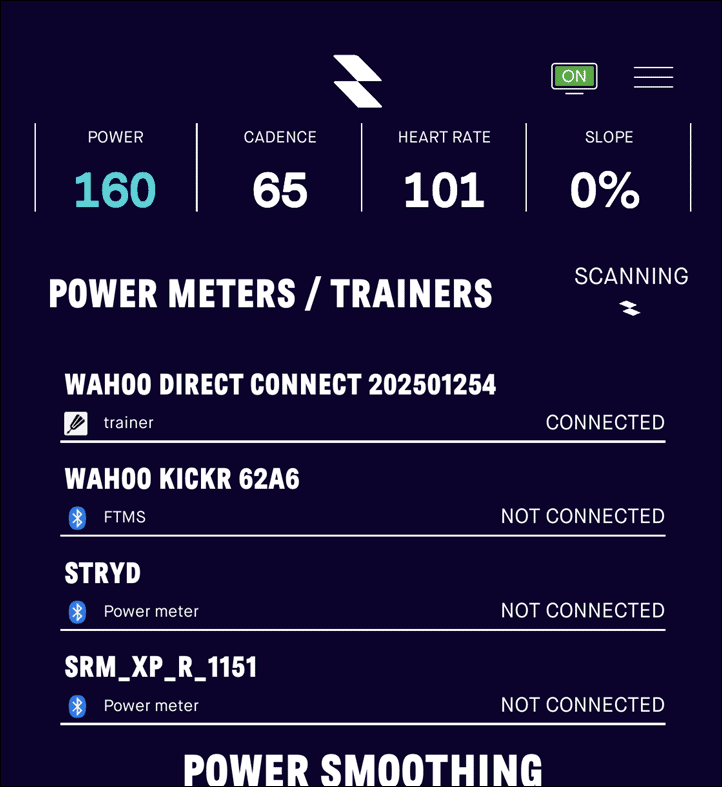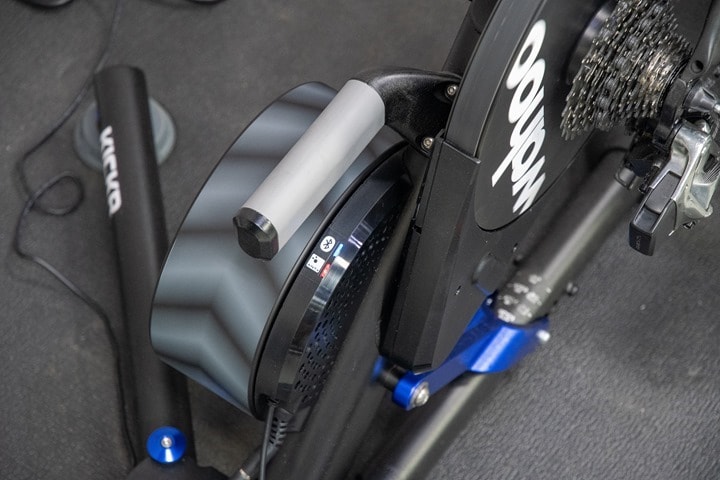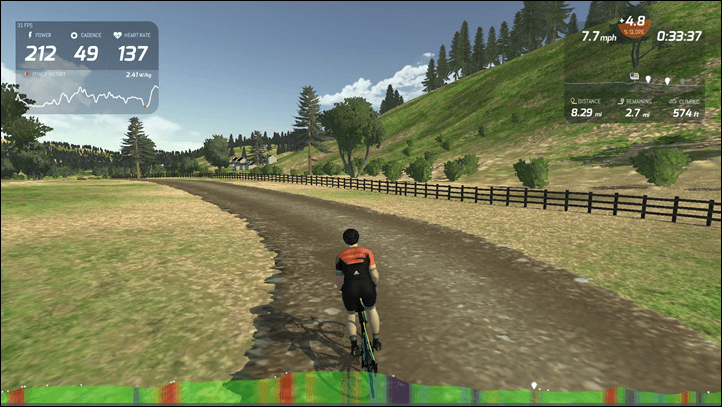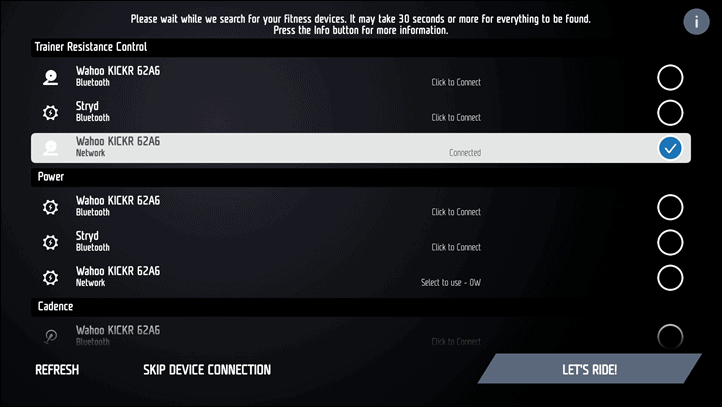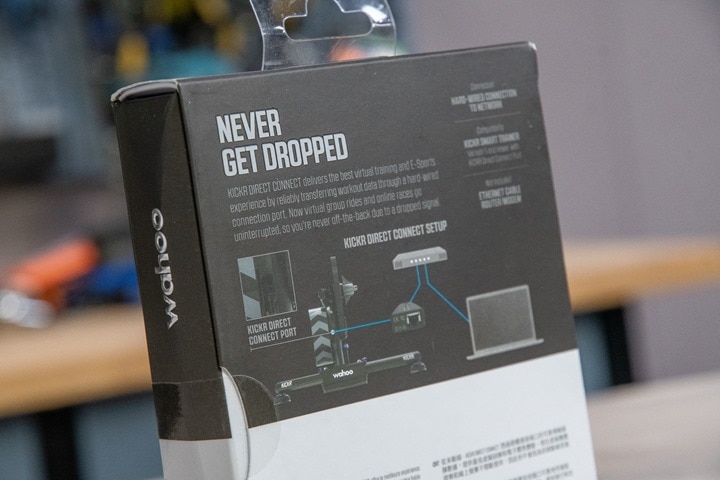Last summer when Wahoo announced the KICKR V5/2020, one of the new features was a new port on the side of the trainer that would allow you to plug it into your home (or office) network, as a means to bypass any wireless connectivity issues you might have. While most of us use wireless connections just fine, some of us aren’t as lucky – especially if living in a crowded RF space like a large apartment building. Similarly, this could be appealing for certain esports events as well.
Anyway, the KICKR V5/2020 didn’t actually have an ethernet port on the side, but rather something akin to a telephone port. That would in turn require you to buy an adapter (aka, a dongle), and plug it in. Then you’d plug the cable into that. After which, apps would be updated to see this new connectivity type (in addition to the usual ANT+ & Bluetooth Smart connections).
Long story short – as of this morning you can now buy that $99 dongle.
Now I had planned for a full in-depth review to be released today…but…umm…things have not been going smoothly. However, in this rare scenario I don’t think it’s a representation of the product per se, but rather, the timing. Simply put – the 3rd party apps aren’t all ready yet and the final firmware just arrived in the last couple days for them to make it ready. If this were a week from now, it’d likely be a different story. But as of this very second when the embargo lifts, the apps are a motley but trying crew that looks like they just finished a hard night at out the bars. All the bars….all the drinks…all night.
So, I’ll circle back next week or so with the final review and all the app players. That review will look vaguely like this post but with a whole lot more detail on some of the nuances, and how each app has implemented it. Also, it has arguably the best intro to a video I’ve ever shot.
The Quick Details:
Above is the box you’ll receive the Direct Connect cable in, it’s roughly akin to every other Wahoo Fitness box. Inside you’ll find the dongle and an quick release extension cable for said dongle. And yes, I’m going to keep saying dongle. Because…I’m a 5 year old boy.
The extension cable is actually there in case you trip over the ethernet cable, since it’ll dethatch cleanly rather than ripping apart your dongle or KICKR port. It works the same way as their power cable. If there were one redeemable aspect for not having a native ethernet port, the quick-release safety cable would be it.
In any event, you’ll take the quick release cable, and the dongle, and stick all the pieces together attached to your KICKR V5/2020.
Oh, and then stick an Ethernet cable into it:
After that, plug the other end of the ethernet cable into your router/hub/switch (technically you can plug it straight into the ethernet port of a computer if you wanted to):
Remember, the goal here is getting the KICKR data stream onto your home network. The app device that you’re using could be wired (like a computer) or wireless (like a phone). While it may seem counterintuitive to then go back to a wireless tablet or phone, the reality is that for most people, it’s not WiFi dropouts that are the issue – but dropouts with ANT+ or Bluetooth Smart (due to WiFi or other interference). Still, in my case I used both a wired Apple TV (for fun), a Mac (WiFi), and an iOS device (WiFi) to demonstrate all the variants.
If you were to crack open the Wahoo Fitness app (the one where you can pair sensors and such), you’ll see the KICKR status of the Direct Connect connection (shown below ‘KICKR CLIMB’). It’ll show ‘disconnected’ for the TCP connection status when an app isn’t actively using it. It allows one concurrent app via ethernet at a time.
![clip_image001[6] clip_image001[6]](https://media.dcrainmaker.com/images/2021/01/clip_image0016_thumb.png)
Now, crack open our favorite trainer app of choice to get pairing. Officially, Wahoo says the following in their press release today:
“As of today, Wahoo’s SUF Training System, TrainerRoad, FulGaz, and RGT Cycling are compatible. Other platforms are expected to become compatible in the coming months, including Zwift.”
Officially, here’s the actual real-world status of all the apps as of the moment this goes live:
FulGaz: In beta builds, but not fully working yet in my testing
RGT: Fully functional in public production version
The Sufferfest: Supposed to be working in production, but not for me or others
TrainerRoad: In certain beta builds, but not fully working yet in my testing. Targeting early February for release.
Zwift: According to Zwift’s product & PR team, actual official target is “later this year”
I haven’t checked with all the other trainer apps out there yet, but will add them to the list if they shoot over their ETA’s.
And since Zwift is obviously the elephant in the room here (and arguably the platform that needs it the most), here’s the full quote from Zwift on that one, based on my question on when exactly it’ll be compatible with Zwift:
“The initial work has begun and Zwift will offer support to the Wahoo Direct Connect Adaptor across all platforms once all QA testing has been completed later this year.
Hard deadline in-game is not in sight at this moment, but we’ll communicate it as soon as we get further along in the testing process.”
Got all that? Good, now, we’ll pick the one app that works for me today: RGT. For that you’ll use your mobile companion app to search for devices on the network. A few seconds later you’ll see the Wahoo KICKR trainer enumerate as both Direct Connect trainer as well as a Bluetooth Trainer (this was on iOS). It has a special icon that looks like a broom. I know…I know…it’s supposed to look like a Wahoo dongle.
In this case, the Direct Connect connection will take care of power and cadence, as well as trainer control. However, the ANT+ & Bluetooth connections are still available for you to connect to, such as with a watch or bike computer. On the KICKR itself, you’ll see both lights on the back illuminate and stay steady-on, indicating a Direct Connect connection:
After that, you simply ride as normal. There is no difference here, nor an notable change. It doesn’t transmit data any faster or slower, or more frequently. It’s identical.
And over on FulGaz (on Apple TV) it’s similar too – you’ll see the ‘Network’ option listed there for each connection
With that, that’s all there is to it. The goal for Wahoo (and the apps I talked to), is that it’s completely transparent to you. You just plug the cable into your network, and then your device/app finds the trainer and you’re done.
And, if you ask me a week or two from now – I’m sure it’ll work exactly like that. Unfortunately, as of today it’s not fully baked yet. Thus, I’ll circle back in another week or two once these apps have had a few mins to make it all work, and dive into more of the nuanced details (like side by side comparisons of the data streams). All the geeky goodness you’ve come to expect.
Wrap-Up:
As I said earlier, I’ll circle back with the full app testing results (including which I’ve got some other testing underway that is either hilarious or sketchy…probably both), once I get the last of the non-Zwift apps compatible. Given Zwift won’t be here till ‘later this year’, I’m not going to wait for them. Some random day in 2021 when they do release an update to make it compatible, then I’ll circle back and update this post with how it works in Zwift.
Ultimately though, I suspect the Wahoo Direct Connect adapter (aka, dongle) will be a short-lived product. Not because anything is wrong with it, but because I see zero chance it’s anything other than a one-hit wonder. Meaning, I’d be blown away surprised (and disappointed) if the next KICKR or KICKR Bike simply doesn’t have this built internally to it. After all, the reason this wasn’t in the KICKR V5/2020 natively was just the timing complexities. And while I don’t know when Wahoo plans to release a new KICKR, they historically are pretty darn consistent for the end of every August (except the year they released a smart bike instead). Meaning that this product has a practical peak-sales timeframe of 8 months. Of which, Zwift may not be compatible at all during that timeframe.
Of course, people will have KICKR V5 trainers for years, and boatloads of them have been sold in the last 6-7 months. So the dongle will invariably be bought for years by those people.
Now – while the dongle itself will probably peak-out, I’d expect the underlying Direct Connect technology to become a standard option on Wahoo trainers/bikes – and probably standard across the industry (in some manner). Esports requirements will likely drive some of that, even if the feature is rarely used by most regular consumers. Thus even if the adapter hardware may be a bit of a flame, the development effort that went into it won’t be a waste – it’ll likely be integrated into future Wahoo products natively.
In any case, more in my final review.
With that – thanks for reading!

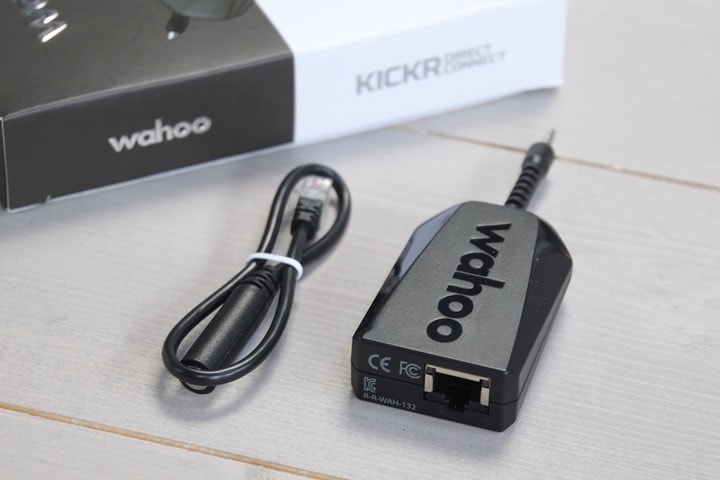
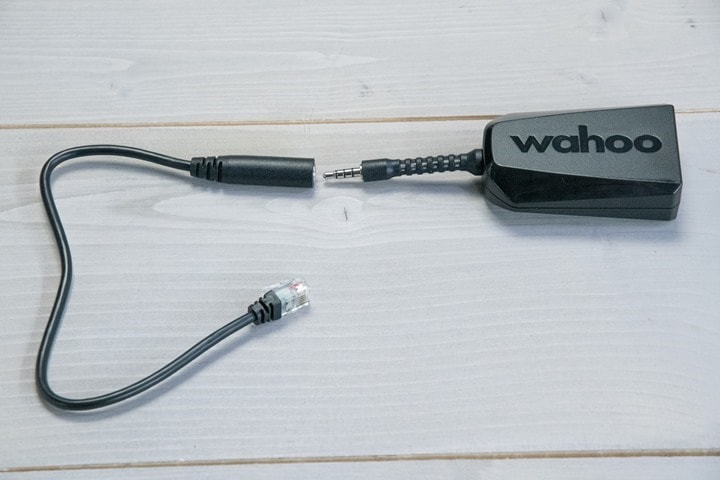
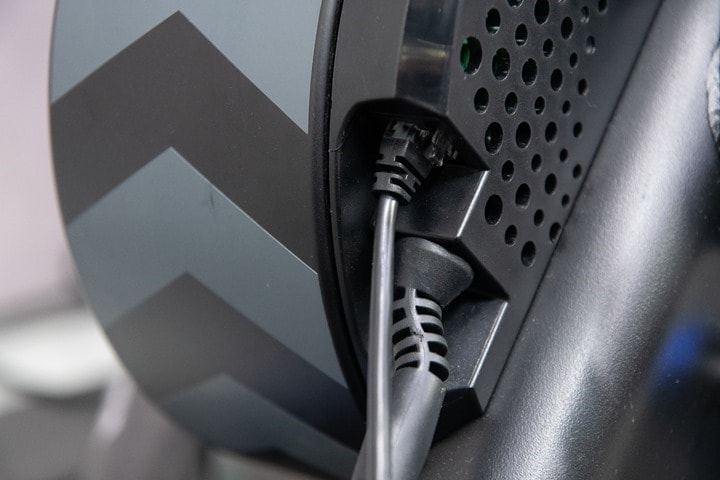
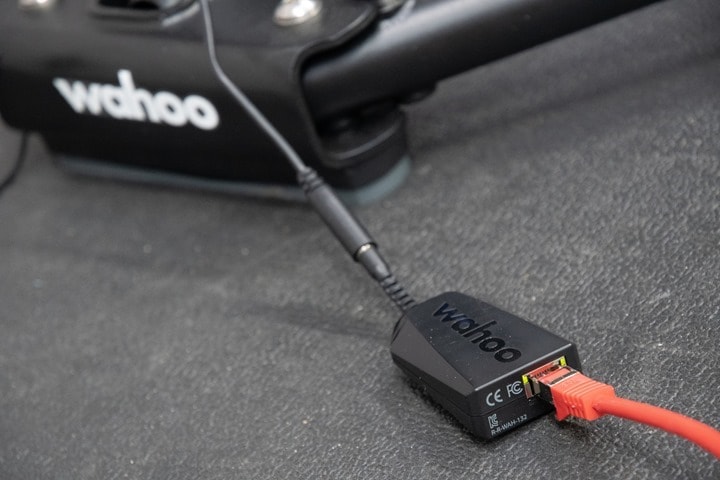
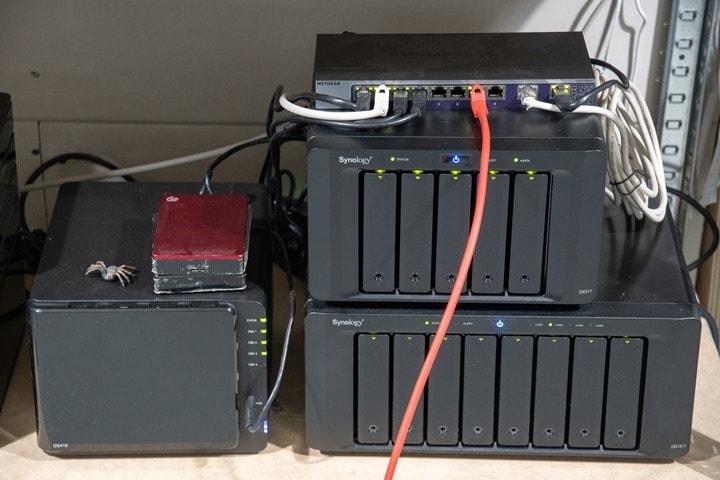
![clip_image001[8] clip_image001[8]](https://media.dcrainmaker.com/images/2021/01/clip_image0018_thumb.png)
